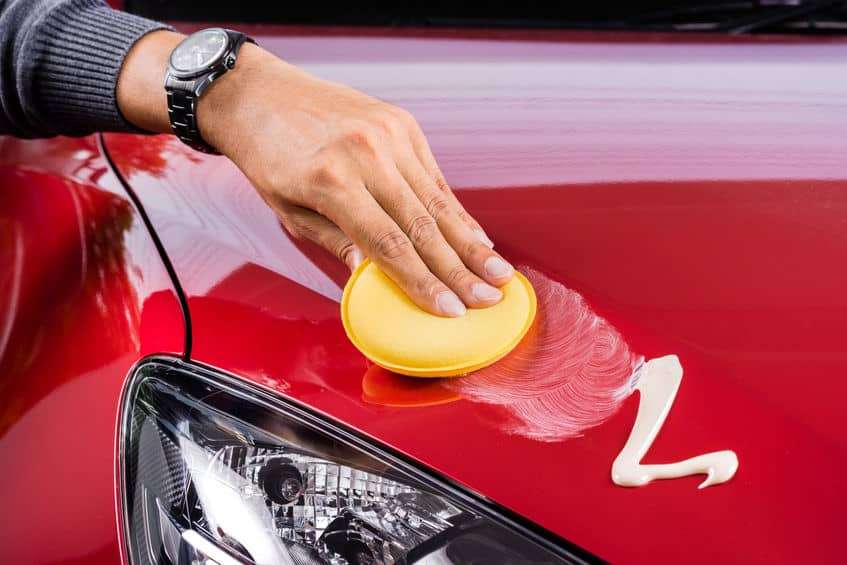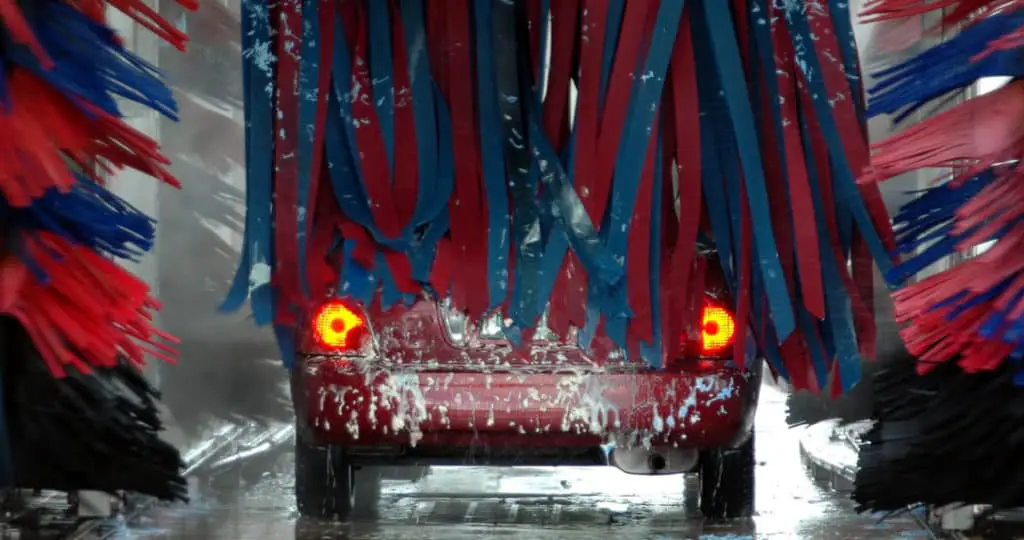- What Is The Two Bucket Car Wash Method (Beginners Guide) - July 2, 2021
- Will Washing Car Remove Wax? What You Need To Know - December 3, 2019
- What Causes Scratches On Car Paint: You Should Know This - April 29, 2019
Last Updated on March 19, 2025 by Nate Schnell
If you love your car, keeping it clean and shiny is probably important to you. However, choosing between carnauba wax and synthetic wax can sometimes feel confusing. Both have their advantages, and the best choice really depends on what you value most: deep shine or lasting protection.
What Exactly Is Carnauba Wax?
Carnauba wax is a natural product derived from the leaves of the Brazilian carnaúba palm tree. This wax naturally protects the leaves from harsh sunlight, and it offers similar protection for your vehicle. It’s widely regarded by car enthusiasts as the premium choice for achieving a rich, deep, warm shine. The depth of gloss you get with carnauba wax is unmatched by most synthetic products, making it the go-to choice for car shows or special occasions.
While carnauba wax excels at shine, it doesn’t provide long-lasting durability. Typically, you can expect the protective layer from carnauba wax to last anywhere from one to four months, depending on environmental conditions. Frequent reapplication is necessary if your car faces harsh conditions regularly.
What Is Synthetic Wax?
Synthetic wax, often called paint sealant, is a man-made wax created from polymers and other synthetic ingredients. Unlike natural carnauba wax, synthetic wax offers extended protection and durability. It’s designed to withstand harsh environmental conditions, including strong sunlight, rain, and contaminants like bird droppings or road grime.
While synthetic wax provides excellent protection, it doesn’t give the same rich, warm shine as carnauba wax. Instead, it offers a more glossy and reflective appearance. Synthetic wax can last anywhere from four to twelve months, significantly outlasting carnauba wax, which makes it an excellent choice for those who prefer less frequent waxing.
Which Wax Is Right for Your Car?
Choosing between these waxes comes down to your personal priorities. If you’re looking for the ultimate shine—perhaps preparing your car for a show or simply wanting it to look stunning—carnauba wax is the clear winner. However, be prepared for more frequent application.
If your primary goal is lasting protection and minimal maintenance, synthetic wax is ideal. It provides reliable protection for months at a time, even if it doesn’t quite match the warm glow of carnauba.
For car owners who want the best of both worlds, combining these two waxes can be a smart move. Start by applying a layer of synthetic wax for robust protection, then follow up with carnauba wax to achieve a high-quality shine. This combination ensures lasting durability without compromising the depth and gloss of your car’s finish.
Recommended Products to Try
With so many waxes available, you might wonder where to begin. If you’re interested in carnauba wax, one popular option is P21S Carnauba Wax. It provides a remarkable shine and reliable protection. Another excellent choice, especially for those on a budget, is Meguiar’s Ultimate Paste Wax, which is easy to apply and offers impressive results.
When it comes to synthetic waxes, CarGuys Liquid Wax stands out. It provides exceptional durability, easy application, and a strong, reflective finish. This synthetic wax kit is highly regarded and includes everything you need for a professional finish.
How Often Should You Wax Your Car?
Regardless of the wax you choose, regular waxing is essential. At the minimum, you should wax your car twice a year. If you opt for carnauba wax, you might want to wax more frequently—approximately every three months—to maintain peak protection and shine. For synthetic wax, waxing your car every six to twelve months is usually sufficient.
A simple trick to know when it’s time to wax again is to observe water behavior on your car’s surface. If water droplets bead up nicely, the wax is still active. When water begins to flatten out or pool, it’s time to reapply wax.
Benefits of Waxing Your Car Regularly
Waxing your car isn’t just about looks. While the beautiful shine certainly makes your vehicle stand out, waxing provides several critical benefits:
First, it protects your paint from damaging UV rays. Sun damage is a major reason why car paint fades or peels over time. By regularly applying wax, you maintain a protective barrier that shields your paint, preserving both your car’s appearance and its resale value.
Second, wax acts as a barrier against dirt, grime, and road debris. It smooths out minor imperfections, making it harder for dirt to adhere to your paint, reducing the likelihood you’ll need to use abrasive cleaning methods like clay bars.
Finally, wax can help mask minor imperfections like fine scratches and swirl marks, enhancing the overall appearance of your vehicle and giving it a consistently glossy finish.
Waxing by Hand vs. Using a Machine Buffer
There are two common ways to apply car wax: by hand or with a machine buffer. Hand application is straightforward and ideal for beginners. It allows precise control over application, ensuring even coverage and minimizing the risk of errors. It requires no special equipment other than an applicator pad and microfiber towel, making it accessible and cost-effective.
On the other hand, using a machine buffer can save significant time and typically delivers a superior finish. Buffers spread wax evenly and efficiently, often resulting in an enhanced shine. However, this method demands more skill, practice, and initial investment in equipment. It’s a favorite among professional detailers or enthusiasts looking for impeccable results.
Ultimately, the choice comes down to your comfort level, budget, and the results you’re aiming to achieve.
Final Thoughts
Deciding between carnauba wax and synthetic wax is about matching your needs and preferences. If high gloss and depth of shine are your goals, go with carnauba. For longer-lasting protection and less frequent application, synthetic wax is your best bet. For those who don’t want to compromise, combining these waxes can provide both protection and the ultimate shine, giving your car a look that’s sure to impress.



